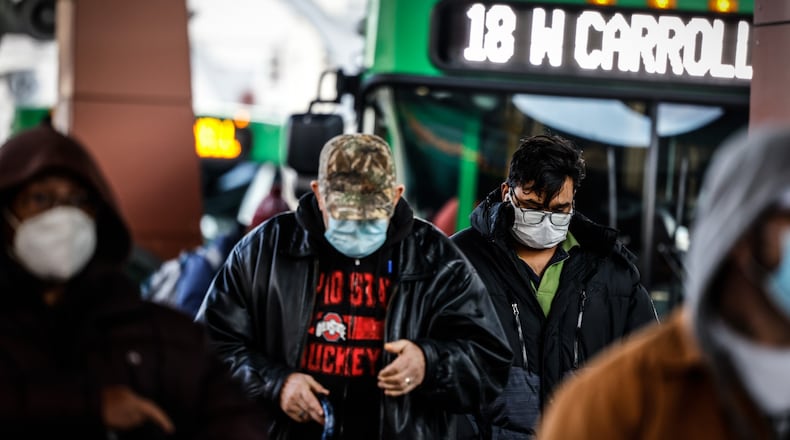However, “it’s important to take into account that the average worker who was remote faced less risk, but those who were essential workers with high exposure potential may have faced a more dangerous working environment,” Dony said.
While the federal data is from 2020, the issue continues, as record numbers of Ohioans are being hospitalized due to COVID-19 (6,536 people on Thursday). While workers try to stay healthy, many businesses are struggling with staffing shortages, due to illness, impacting their operations.
Ohio employers reported 22,000 nonfatal workplace illnesses in 2020, according to the Survey of Occupational Illnesses and Injuries by the U.S. Bureau of Labor Statistics.
That’s more cases than the four previous years combined, and 2020′s tally was up from 5,100 nonfatal occupational illnesses in 2019, the data show.
About 17,900 cases — or 81% of the total number of occupational illness cases in the state — were categorized as respiratory illnesses, said Kim Norris, a spokesperson with the Ohio Bureau of Workers’ Compensation.
The Bureau of Labor Statistics does not track COVID-19 cases specifically, she said, but the virus is the primary reason why cases of this type increased 500% from the prior year.
However, Norris said, other states saw even larger increases, like Michigan, where cases shot up 700%.
“Public health interventions in Ohio appear to have had significant impact in preventing the numbers from being much worse,” she said.
One silver lining of the pandemic is that fewer workers were injured or died on the job in Ohio.
About 117 workers in the state died from job-related injuries in 2020, which was down 30% from 2019. The state’s fatal injury rate slipped to 2.4 per 100,000 full-time equivalent workers, from 3.1 the year before.
Also, about 79,000 Ohio workers sustained nonfatal on-the-job injuries, which was a 25% decrease from the previous year. according to Bureau of Labor Statistics data.
Occupational injuries declined in large part because of reduced work activities in many sectors during the pandemic, such as accommodation and food services, retail and construction, Norris said.
Massive numbers of people were laid off, at least temporarily, and many people worked from home during the state’s stay-at-home order and after that.
People worked 9% fewer hours in 2020 than they did in 2019, and that combined with remote working meant there was less exposure to workplace risks, said Dony, with the National Safety Council.
According to the council and federal survey data, the number of severe cases of illness involving days away from work increased.
Now the omicron variant is spreading rapidly, and many Ohioans are missing work and employers are struggling to maintain normal operations.
Across Ohio, workforce issues are the top challenge facing employers, and the worker shortage tied to the pandemic makes it harder for businesses to grow and hinders the state’s economic recovery, said Kevin Shimp, director of labor and legal affairs with the Ohio Chamber of Commerce.
A recent survey by the Ohio Restaurant Association found that 88% of restauranteurs said finding workers is a critical issue or one of their top three concerns.
On Monday, the Greater Dayton Regional Transit Authority announced it will temporarily reduce service because of rising absences likely due to COVID and lower ridership during the public health crisis.
Credit: JIM NOELKER
Credit: JIM NOELKER
All RTA routes will continue to run, but most will run a lower-frequency Saturday service schedule six days a week (Monday to Saturday), which requires fewer drivers, said Bob Ruzinsky, CEO of the Greater Dayton RTA.
About 54 drivers were absent Monday, or about 25% of planned staff, he said, and 61 were absent Tuesday, or 27% of planned staff.
“Each day we schedule for between 210 to 230 drivers depending on demand and expect about a 15% absence rate (vacations, days off, etc.),” Ruzinsky said.
The decision was not made lightly and will impact essential workers the transit agency serves, but COVID’s disruptions continue, he said.
About the Author


